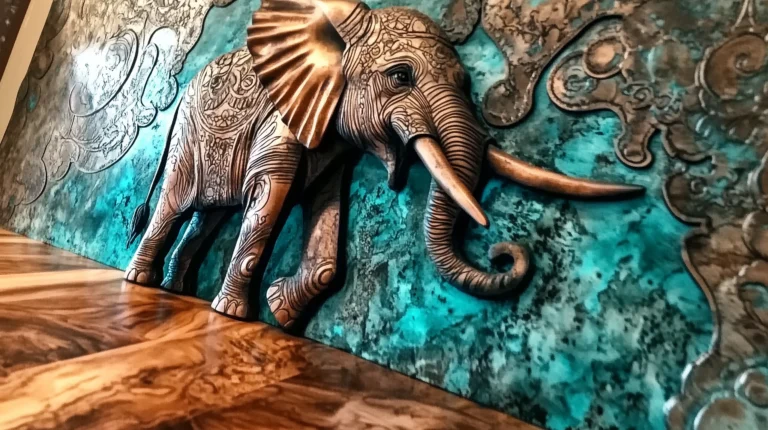Memetic Alchemy
Memetic Alchemy
The Arcane Art of Idea Transmutation in the Digital Realm
Chapter 1
The Viral Vessel of Thought
In the sprawling digital landscape, a new kind of contagion has emerged. Not of biological origin, but borne of the very essence of human culture and thought. These are memes, the primal matter of digital consciousness, replicating through our collective mind with an insidious precision that would marvel even the most adept alchemist of yore.
A meme is more than a mere image or snippet of text shared online—it is the embodiment of an idea, a unit of cultural information that burrows into the psyche, propagating itself across the vast networks of human interaction. The meme’s very nature is alchemical, transforming the leaden sprawl of information into the gold of shared experience and understanding. Yet, unlike the noble pursuit of ancient alchemists, not all memes seek to enlighten. Some, in their quest for replication, tap into the baser elements of our nature, exploiting biases and emotions to propagate themselves at any cost.
As a virus commandeers a cell, so too does a meme seize the cognitive resources of its host. It demands attention, the most precious currency in our digital economy, replicating itself by compelling the host to share it with others. This replication is rarely a carbon copy; each iteration may mutate, adapt, and evolve to better fit the medium through which it spreads and the minds it seeks to colonize. The most resilient of these memes are those that resonate with a wide audience, often by affirming existing beliefs or by offering a simplistic narrative for complex issues.
Memes spread through a process akin to infection, jumping from mind to mind, leveraging the social networks we traverse. This cognitive contagion can be benign, even beneficial, as ideas about health, science, and culture proliferate. Yet, there exists a darker side to this phenomenon: when memes carry with them the seeds of disinformation, prejudice, or fear, they become agents of cognitive distortion. Like an unchecked plague, these malignant ideas can spread through a population, skewing perceptions and polarizing communities.
As we close the first chapter of our exploration into memetic alchemy, we must ponder the implications of these viral vessels of thought. They are the modern philosopher’s stone, capable of transforming society for better or worse. The power they hold is immense, and with it comes the imperative to understand their nature and inoculate ourselves against their more pernicious effects.
Chapter 2
The Crafting of Consent
As the digital age refines the ways in which information is shared and consumed, the art of consent has become subtly intertwined with the crafting of memes. These packets of cultural data hold the power not only to entertain but also to engineer the very fabric of political and social discourse.
Political correctness can be seen as a form of memetic engineering, a deliberate design of discourse that seeks to mold the collective consciousness towards a set of agreed norms and values. Through the careful construction and dissemination of memes that carry politically correct messages, there is a conscious attempt to influence and standardize public opinion. This process is not without contention; as with any form of engineering, the outcomes can be unpredictable and often lead to a polarization of views. The meme thus becomes a crucible for ideological alchemy, transmuting the lead of raw thought into the gold of refined social consensus.
The replication of ideology through memes is an art form that plays out on the vast canvases of social media platforms and news outlets. Memes act as the vectors for these narratives, each share and retweet a replication, each adaptation a mutation. The more a meme resonates with the prevailing sentiments of its audience, the more likely it is to be propagated, leading to the amplification of the preferred narrative. This replication is not a mere copy-paste of information; it is a strategic reinforcement of ideas that subtly shapes the ideological leanings of its consumers.
On the cognitive battlefield, memes serve as both sword and shield. They are tools wielded with precision to defend one’s own ideological territory or to launch an assault on opposing views. As agents of influence, memes can simplify complex political and social issues into digestible and often emotionally charged packets of information. This simplification can crystallize complicated debates into black-and-white dichotomies, shaping public discourse in a way that favors the meme’s creators or propagators. As such, memes can play a pivotal role in the crafting of consent, swaying public opinion with an efficacy that belies their often innocuous appearance.
As we conclude this chapter, we recognize that the craft of consent is an ongoing process, a battle of narratives where memes are the weapons of choice. Understanding their role in this dynamic is crucial for discerning the messages we encounter daily and for recognizing the underlying intentions of those who seek to shape our perceptions.
Chapter 3
Echo Chambers and Ideological Infections
As we delve deeper into the memetic paradigm, we encounter the digital echo chambers, where the infectious nature of memes is amplified, breeding ideological infections that can distort reality and solidify dogma.
The propagation of memes within digital ecosystems can often be traced to the underlying psychology of their human hosts. In these spaces, individuals seek out information that reinforces their preexisting beliefs, a phenomenon known as confirmation bias. This psychological tendency creates fertile ground for memes to flourish and spread, particularly those that resonate with the prevailing sentiments of these communities. The virality of a meme is often a function of its emotional charge; those that provoke a strong emotional reaction—be it humor, outrage, or solidarity—are more likely to be shared, thus ensuring their propagation through the digital landscape.
Beliefs are not static; they are shaped and reshaped by the pressures exerted by the memes we encounter. In the cauldron of social media, memes contribute to the construction of a shared reality, reinforcing certain viewpoints through sheer repetition and visibility. This memetic pressure can lead to a kind of tunnel vision, where the diversity of thought is narrowed and the spectrum of accepted beliefs becomes more rigid. As individuals and communities become more insular, the shared reality within these echo chambers becomes increasingly detached from the multiplicity of perspectives in the wider world.
Memes have become the mythmakers of the digital age, crafting narratives that often acquire a quasi-religious status among their adherents. These modern myths are not based on the divine or supernatural but are rooted in the secular sacrosanctity of shared ideologies. The dogmatic power of these narratives lies in their simplicity and their ability to encapsulate complex ideologies into easily digestible and shareable forms. As with the myths of old, these contemporary tales serve to explain, to justify, and to rally—molding the collective consciousness in their image.
As this chapter closes, we reflect on the potent combination of psychology, technology, and ideology that memes embody. They are not merely passive pieces of information but active participants in the shaping of our perception of reality. The recognition of this fact is essential as we navigate the memetic landscape, seeking to understand not only how memes influence us but also how we can engage with them more mindfully.
Chapter 4
The Attention Economy and its Discontents
In the current age, where information is abundant and attention is scarce, a new economy has taken root—one where human focus is the ultimate commodity and memes are the currency of exchange.
Attention is a finite resource, and in the digital marketplace, memes compete to capture it. This competition has led to the commodification of human attention, with memes acting as the currency traded for likes, shares, and retweets. The value of a meme in this economy is determined by its ability to captivate and hold the attention of its audience. As such, content creators meticulously craft their memes to be eye-catching, emotionally provocative, and easily digestible, ensuring their rapid circulation in the currency of digital attention.
In the sprawling fields of the internet, memes are the crops that vie for the nourishment of human attention. The harvest of this attention is critical, as it determines which ideas will flourish and which will wither away. This competition for cognitive space is fierce, and memes must adapt to the contours of human psychology and the algorithms of social media platforms to survive. The ideas that resonate with a wide audience, that tap into the zeitgeist, are the ones that dominate the harvest, crowding out other, perhaps more nuanced, thoughts and discussions.
Virality is the apex of success in the attention economy, yet it comes with its own costs. As memes become viral, they often lose depth and nuance, reduced to the lowest common denominator to ensure the widest possible appeal. This dilution of discourse can lead to oversimplification of complex issues, polarizing debates, and the proliferation of misinformation. The rapid and shallow consumption of these viral memes can hinder critical thinking and reflection, leaving little room for the deeper contemplation necessary for meaningful discourse.
This chapter reveals the discontents of the attention economy, where the value of information is often measured by its ability to distract rather than to inform. As we grapple with the implications of this economy on our culture and conversations, we must also look towards the possibilities of cultivating a more discerning engagement with the memes that vie for our attention.
Chapter 5
Reclaiming Cognitive Sovereignty
The final chapter of our exploration into the memetic realm is dedicated to the empowerment of the individual mind. In the vast and turbulent sea of the digital age, cognitive sovereignty is the lighthouse guiding us toward a horizon of clarity and purpose.
To reclaim our cognitive domains, we must first become adept diagnosticians of memetic maladies. These are the memes that, disguised in humor or emotional appeal, carry with them a payload of manipulation. They often reinforce stereotypes, inflame prejudices, or oversimplify the nuanced realities of life. Recognizing these characteristics is the first step in immunization. By examining the source, intent, and underlying message of a meme, we can begin to discern its true nature and the potential impact it may have on our thought processes and beliefs.
Building immunity to memetic manipulation requires a regimen of critical thinking exercises and conscious engagement with content. Just as the body develops antibodies to combat infection, the mind must cultivate critical thinking skills to resist memetic intrusion. This involves questioning the origin of the meme, the evidence supporting its message, and the logical coherence of its argument. It also means seeking out diverse perspectives to challenge our own biases and assumptions. By doing so, we foster a mental environment where manipulative memes cannot take root.
The ethical alchemy of memetics is the transformation of the base instincts of communication into the gold of enlightened discourse. It is about fostering memes that enrich our understanding, promote positive values, and contribute to the common good. This alchemical process involves creating and sharing content that is truthful, informative, and uplifting. It is about leveraging the connective power of memes to unite rather than divide, to enlighten rather than obscure. In this ethical pursuit, memes become catalysts for positive change, encouraging societal growth and the betterment of humanity.
Conclusion
The Conscious Memetic Paradigm
As we reflect on the memetic journey we have undertaken, it is evident that the landscape of human thought and culture is being terraformed by the silent, relentless march of memes. These digital artifacts, carrying within them the DNA of ideas, beliefs, and ideologies, command the resources of their hosts—us, the thinkers, the sharers, the unwitting carriers. They replicate by leveraging our cognitive faculties, often aligning themselves with the machinery of political correctness to ensure their survival and proliferation.
The guide has shed light on the memetic mechanism akin to a biological infection, spreading through the vectors of human communication and interaction. This memetic contagion shapes the cognitive processes of individuals, morphing the collective consciousness into a reflection of its most dominant narratives. As these ideas replicate, they infuse themselves into the very fabric of society, altering perceptions and behaviors on a mass scale.
The prevalence of these memes, their capacity to infect and influence, reveals a new kind of epidemic—one of the mind. As they propagate, they carry with them not only the potential for ideological alignment but also the dogmatic rigidity often found in religious doctrines. The memes of today, armed with the ability to mobilize collective human attention, wield the power to manifest their encoded intentions into the physical world, sculpting reality with the chisel of popular thought.
Yet, amidst this revelation lies a call to action—a clarion call for cognitive sovereignty. Human attention, a potent and precious commodity, must be safeguarded against memetic structures that do not serve humanity’s best interests. It is a call to discernment, to a critical examination of the ideas we consume and propagate. It is a call to ethical memetic alchemy, where the raw materials of communication are transmuted into conduits for truth, understanding, and the common good.
As we conclude our guide, “Memetic Alchemy: The Arcane Art of Idea Transmutation in the Digital Realm,” it is our hope that these pages serve not as an endpoint but as a beginning. A beginning of a collective journey towards a more conscious and conscientious memetic landscape, where each of us holds the power to shape reality with the ideas we choose to propagate. In reclaiming our cognitive sovereignty, we reclaim the very essence of our shared human experience.
The guide concludes not with an end but with an invitation to begin anew, with eyes wide open and minds attuned to the subtle nuances of the memetic tides. It is an invitation to participate in the conscious shaping of our memetic environment, to contribute to a discourse that is reflective, inclusive, and benevolent. For in the realm of ideas, as in the alchemy of old, it is within our power to transform the leaden shadows of ignorance into the golden light of awareness.







